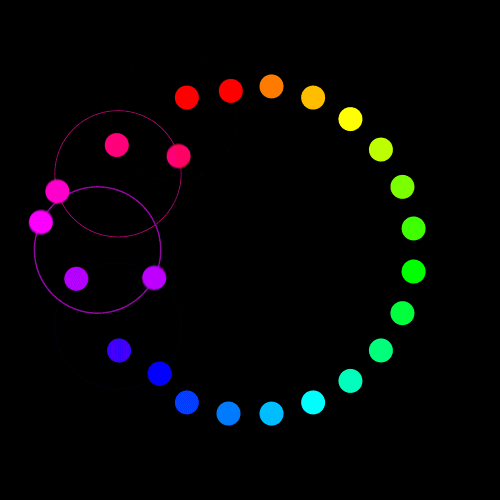
认知语言学入门(第二版)(当代国外语言学与应用语言学文库)(升级版)
副标题:无
作 者:F. 温格瑞尔(F. Ungerer),H.-J. 施密德(H.-J. Schmid)
分类号:
ISBN:9787521328974
微信扫一扫,移动浏览光盘
简介
目录
Contents
Publishers' acknowledgements xxv
Preface to the second edition xxvii
Typographical conventions xxix
Introduction 1
1 Prototypes and categories 7
1.1 Colours, squares, birds and cups: early empirical research into lexical categories 7
1.2 The internal structure of categories: prototypes, attributes, family resemblances and gestalt 24
1.3 Context-dependence and cultural models 45
2 Levels of categorization 64
2.1 Basic level categories of organisms and concrete objects 64
2.2 Superordinate and subordinate categories 76
2.3 Conceptual hierarchies 85
2.4 Categorization and composite word forms 92
2.5 Basic level categories and basic experiences: actions, events, properties, states and locations 101
3 Conceptual metaphors and metonymies 114
3.1 Metaphors and metonymies: from figures of speech to conceptual systems 114
3.2 Metaphors, metonymies and the structure of emotion concepts 132
3.3 Metaphors as a way of thinking: examples from science and politics 144
3.4 Thinking in metonymies: potential and limitations 154
4 Figure and ground 163
4.1 Figure and ground, trajector and landmark: early research into prepositions 163
4.2 Figure, ground and two metaphors: a cognitive explanation of simple clause patterns 176
4.3 Other types of prominence and cognitive processing 191
5 Frames and constructions 207
5.1 Frames and scripts 207
5.2 Event-frames and the windowing of attention 218
5.3 Language-specific framing and its use in narrative texts 230
5.4 Construction Grammar 244
6 Blending and relevance 257
6.1 Metaphor, metonymy and conceptual blending 257
6.2 Conceptual blending in linguistic analysis and description 268
6.3 Conceptual blending in advertising texts, riddles and jokes 280
6.4 Relevance: a cognitive-pragmatic phenomenon 288
7 Other issues in cognitive linguistics 300
7.1 Iconicity 300
7.2 Lexical change and prototypicality 312
7.3 Cognitive aspects of grammaticalization 321
7.4 Effects on foreign language teaching 328
Conclusion 343
Publishers' acknowledgements xxv
Preface to the second edition xxvii
Typographical conventions xxix
Introduction 1
1 Prototypes and categories 7
1.1 Colours, squares, birds and cups: early empirical research into lexical categories 7
1.2 The internal structure of categories: prototypes, attributes, family resemblances and gestalt 24
1.3 Context-dependence and cultural models 45
2 Levels of categorization 64
2.1 Basic level categories of organisms and concrete objects 64
2.2 Superordinate and subordinate categories 76
2.3 Conceptual hierarchies 85
2.4 Categorization and composite word forms 92
2.5 Basic level categories and basic experiences: actions, events, properties, states and locations 101
3 Conceptual metaphors and metonymies 114
3.1 Metaphors and metonymies: from figures of speech to conceptual systems 114
3.2 Metaphors, metonymies and the structure of emotion concepts 132
3.3 Metaphors as a way of thinking: examples from science and politics 144
3.4 Thinking in metonymies: potential and limitations 154
4 Figure and ground 163
4.1 Figure and ground, trajector and landmark: early research into prepositions 163
4.2 Figure, ground and two metaphors: a cognitive explanation of simple clause patterns 176
4.3 Other types of prominence and cognitive processing 191
5 Frames and constructions 207
5.1 Frames and scripts 207
5.2 Event-frames and the windowing of attention 218
5.3 Language-specific framing and its use in narrative texts 230
5.4 Construction Grammar 244
6 Blending and relevance 257
6.1 Metaphor, metonymy and conceptual blending 257
6.2 Conceptual blending in linguistic analysis and description 268
6.3 Conceptual blending in advertising texts, riddles and jokes 280
6.4 Relevance: a cognitive-pragmatic phenomenon 288
7 Other issues in cognitive linguistics 300
7.1 Iconicity 300
7.2 Lexical change and prototypicality 312
7.3 Cognitive aspects of grammaticalization 321
7.4 Effects on foreign language teaching 328
Conclusion 343
认知语言学入门(第二版)(当代国外语言学与应用语言学文库)(升级版)
- 名称
- 类型
- 大小
光盘服务联系方式: 020-38250260 客服QQ:4006604884
云图客服:
用户发送的提问,这种方式就需要有位在线客服来回答用户的问题,这种 就属于对话式的,问题是这种提问是否需要用户登录才能提问
Video Player
×
Audio Player
×
pdf Player
×


